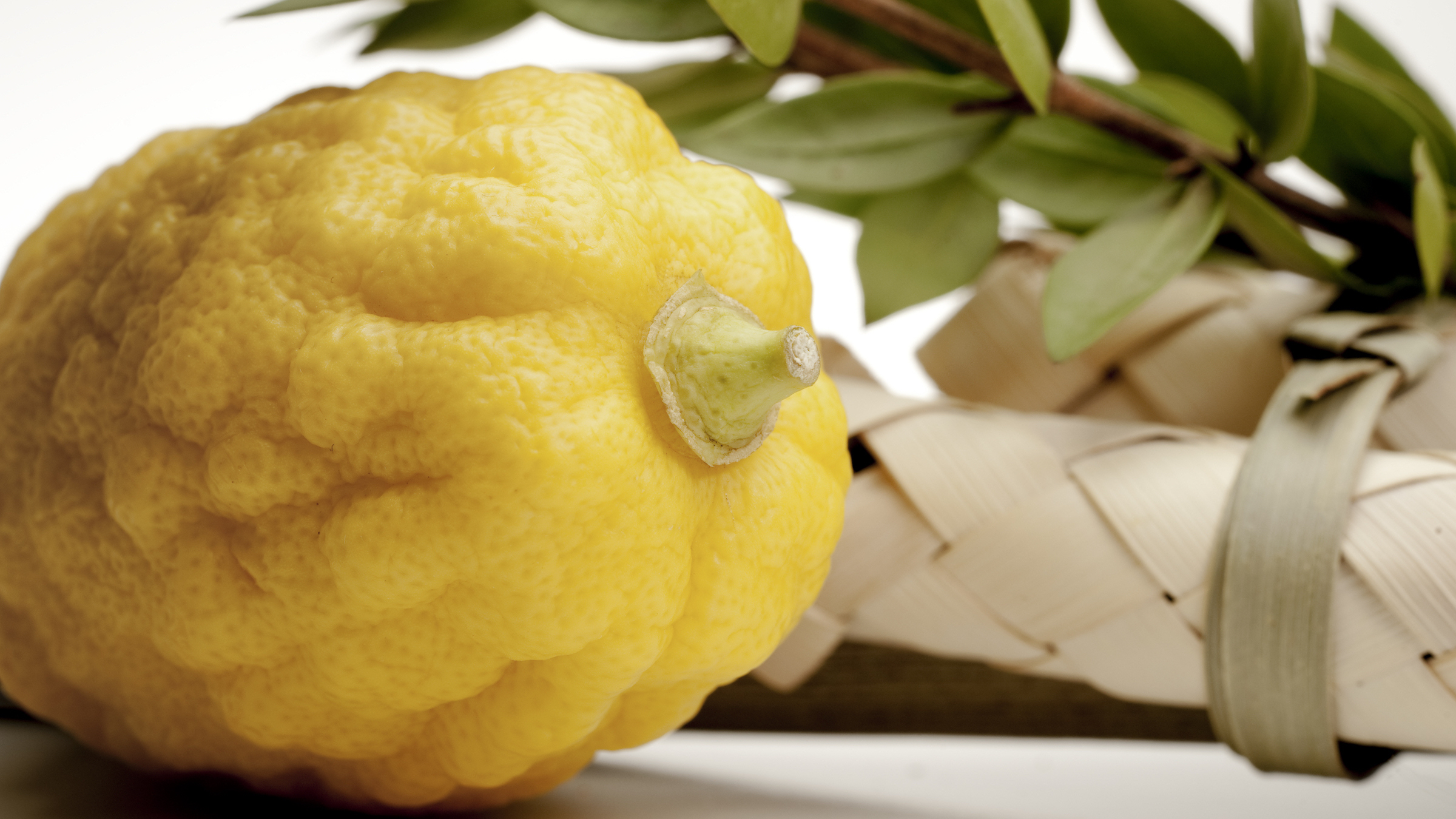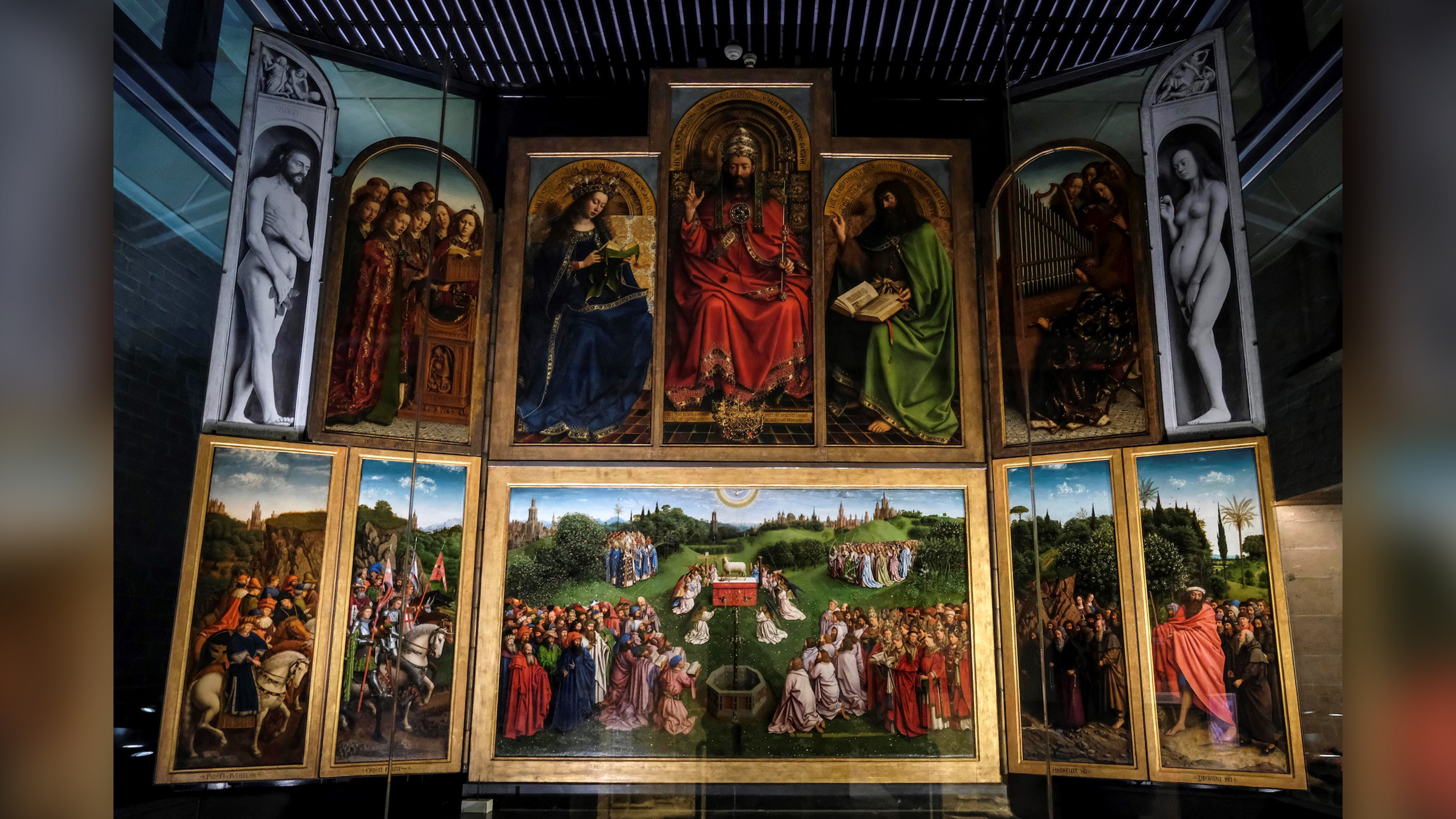Was the 'forbidden fruit' in the Garden of Eden really an apple?
Nobody knows because the Hebrew Bible just says "fruit."

What's the likely identity of the "forbidden fruit" described in the Bible's Garden of Eden, which Eve is said to have eaten and then shared with Adam?
If your guess is "apple," you're probably wrong.
The Hebrew Bible doesn't actually specify what type of fruit Adam and Eve ate. "We don't know what it was. There's no indication it was an apple," Rabbi Ari Zivotofsky, a professor of brain science at Israel's Bar-Ilan University, told Live Science.
Related: What led to the emergence of monotheism?
The pivotal scene is described in Genesis, the first book of the Hebrew Bible, shortly after God warns Adam not to eat from the "tree of knowledge." A serpent in the garden, however, tells Eve to go ahead and take a bite.
"When the woman saw that the tree was good for eating and a delight to the eyes, and that the tree was desirable as a source of wisdom, she took of its fruit and ate. She also gave some to her husband, and he ate" (Genesis 3:6), according to the Jewish Publication Society's translation at Sefaria.org.
As for the type of fruit, it's described as "just the 'fruit of the tree,'" Zivotofsky said. "That's all it says. No identification. We don't know what kind of tree, we don't know what fruit."
Get the world’s most fascinating discoveries delivered straight to your inbox.
The Hebrew word used in that verse is "peri," a generic word for fruit in both biblical and modern Hebrew, according to Zivotofsky. The modern Hebrew word for apple, "tapuach," on the other hand, does not appear anywhere in Genesis or in the first five books of the Hebrew Bible, Zivotofsky said. (It does appear in other, later biblical texts.) In biblical times, "tapuach," was a word for generic fruit.
So, if the forbidden fruit wasn't an apple, what was it?
Rabbis commenting on the Hebrew Bible in the Talmud, a collection of rabbinic teachings and biblical law, and other writings completed by around A.D. 500, have noted several ideas about the mystery fruit's identity, but — spoiler alert — apple is not one of them, Zivotofsky said.
Over the years, rabbis have written that the fruit could have been a fig, because in the Hebrew Bible, Adam and Eve realized they were naked after eating from the tree of knowledge, and then used fig leaves to cover themselves. Or maybe, some rabbis wrote, it was wheat, because the Hebrew word for wheat, "chitah," is similar to the word for sin, "cheit," Zivotofsky said. Grapes, or wine made from grapes, are another possibility. Finally, the rabbis wrote that it might have been a citron, or "etrog" in Hebrew — a bittersweet, lemon-like fruit used during the Jewish fall festival of Sukkot, a harvest celebration in which Jews erect temporary dwellings.

Given all of these potential forbidden fruits, how did apples — which aren't even from the Middle East, but from Kazakhstan in Central Asia, according to a 2017 study in the journal Nature Communications — become the predominant interpretation?
It turns out this interpretation likely didn't originate in Jewish lore, Zibotofsky said. "I don't think that within Jewish tradition it ever did become the apple, meaning in Jewish art, you don't find that," Zivotofsky said.
Instead, the possible path from fruit to apple began in Rome in A.D. 382., when Pope Damasus I asked a scholar named Jerome to translate the Bible into Latin, according to Encyclopedia Britannica. As part of that project, Jerome translated the Hebrew "peri" into the Latin "malum," according to Robert Appelbaum, a professor emeritus of English literature at Uppsala University in Sweden and the author of "Aguecheek's Beef, Belch's Hiccup, and Other Gastronomic Interjections" (University of Chicago Press, 2006).
"The word ["malum"] in Latin translates into a word in English, apple, which also stood for any fruit ... with a core of seeds in the middle and flesh around it. But it was a generic term [for fruit] as well," Appelbaum told Live Science. Apple had this generic meaning until the 17th century, according to the Online Etymological Dictionary. Jerome likely chose the word "malum" to mean fruit, because the very same word can also mean evil, Appelbaum said. So it's a pun, referring to the fruit associated with humans' first big mistake with a word that also means essentially that.
Meanwhile, paintings and other artistic recreations of the Garden of Eden have helped solidify the apple as the forbidden fruit. In art, unlike in writing, a fruit cannot be purely generic, Appelbaum said. "Artists, more than writers, had to show something," he said. They didn't always show an apple: Artistic renderings of the "Fall from Eden" depicted the fruit as a citron ("Ghent Altarpiece" by Hubert and Jan van Eyck, 1432), as an apricot ("Eve Tempted By the Serpent" by Defendente Ferrari, 1520-25), and as a pomegranate ("The Fall of Man" by Peter Paul Rubens, 1628-29), according to Appelbaum.

Yet by the 16th century, the apple had also entered the proverbial fruit bowl. In 1504, an engraving by the German painter Albrecht Dürer and a 1533 painting by German painter, Lucas Cranach the Elder, depicted the fruit as an apple, according to NPR. Also according to NPR, in the epic poem "Paradise Lost," first published in 1667, English poet John Milton uses the word "apple" twice to refer to the forbidden fruit.
But was the apple in "Paradise Lost" really the apple that we think of today, or was it some generic fleshy fruit with seeds in the middle? There's at least some room for doubt about that, according to Appelbaum. Milton describes the "apple" once Eve takes a bite, "as being fuzzy on the outside, and extremely juicy and sweet and ambrosial. All words which are attached to peaches," Appelbaum said.
The so-called Franken-tree, a modern grafted tree bearing 40 types of fruit, didn't exist in biblical times, but if it did, it just might clear up this mystery.
Originally published on Live Science.

Ashley P. Taylor is a writer based in Brooklyn, New York. As a science writer, she focuses on molecular biology and health, though she enjoys learning about experiments of all kinds. Ashley's work has appeared in Live Science, The New York Times blogs, The Scientist, Yale Medicine and PopularMechanics.com. Ashley studied biology at Oberlin College, worked in several labs and earned a master's degree in science journalism from New York University's Science, Health and Environmental Reporting Program.



